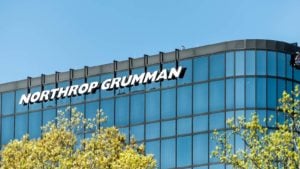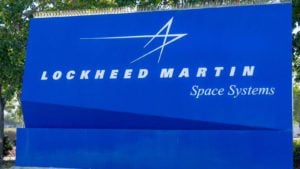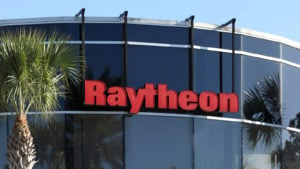The defense industry holds a number of appealing stocks for dividend growth investors. Constant geopolitical concerns and rising defense budgets around the world provide a strong backdrop for the biggest defense companies.
The major defense companies have sustainable dividends, even during recessions, due to the persistent need for global defense. In turn, investors have generated strong returns from defense stocks, as well as steady dividend growth each year.
This article will discuss three top defense stocks for dividend growth investors.
Northrop Grumman (NOC)

Northrop Grumman (NYSE:NOC) is a major defense company with four business segments: Aeronautics Systems (aircraft and UAVs), Mission Systems (radars, sensors and systems for surveillance and targeting), Defense Systems (sustainment and modernization, directed energy, tactical weapons), and Space Systems (missile defense, space systems, hyper-sonics and space launchers). The company generates over $35 billion in annual revenue.
Northrop Grumman reported results for Q2 of fiscal 2023 on July 27. Company-wide revenue increased 9%, and diluted adjusted earnings per share (EPS) fell 12% on a year-over-year basis on lower margins. Revenue for Aeronautics Systems rose 2% due to higher volumes in Manned Aircraft and Autonomous Systems offset by declines in E-2, F/A-18, and JSTARS. Revenue for Defense Systems rose 10% in comparable quarters due to higher sales in ammunition programs, the IBCS, HACM, and NATO AGS ISS.
The company’s total backlog is about $78.8 billion at the end of the quarter, of which $37.9 billion is funded. The firm won $10.9 billion for restricted programs, including $5.4 billion for restricted programs. The book-to-bill ratio was 1.14x.
Northrop Grumman’s earnings have increased substantially over time driven by top-line growth from contract wins, modernization and upgrades, services, and acquisitions. A significant reduction in the share count has helped drive earnings per share gains as well. Looking forward, the company will achieve both revenue and EPS growth through its involvement in the F-35, B-2, E2-2D, B-21, and space platforms. We reduced our estimate of average annual EPS growth to 8%.
Northrop Grumman has paid a growing dividend for 20 years, which makes NOC a strong income stock. The payout ratio is currently low at approximately 33%, so there is room for further increases. The stock currently yields 1.5%.
Lockheed Martin (LMT)

Lockheed Martin (NYSE:LMT) is the world’s largest defense company. It derives roughly 60% of its revenue from the U.S. Department of Defense. Other U.S. government agencies represent 10% of revenue, with 30% from international clients. The company consists of four business segments. Aeronautics, which produces military aircraft like the F-35, F-22, F-16 and C-130, is the biggest segment at 40% of sales.
The Rotary and Mission Systems represents 26% of sales and produces combat ships, naval electronics, and helicopters. The company also operates a Missiles and Fire Control business and a Space Systems segment.
Lockheed Martin reported solid third-quarter results on Oct. 17. Net sales increased by 1.7% and adjusted EPS rose 1.4%. Aeronautics net sales decreased 5% due to lower F-35 sales, offset by higher classified volumes. Missiles and Fire Control sales rose 4% in comparable periods due to higher tactical and strike missile volumes offset by integrated and air and missile defense volumes. Rotary and Mission Systems net sales climbed 9% from increases in integrated warfare systems and sensors volumes and C6ISR volumes. Finally, Space sales increased 8%.
Lockheed Martin is an entrenched military prime contractor. It produces aircraft and other platforms that serve as the backbone for the U.S. military and other militaries around the world. This leads to a competitive advantage as any new technologies would have to significantly outperform extant platforms. These platforms have decades long life cycles and Lockheed Martin has the expertise and experience to perform sustainment and modernization. These characteristics lead to a good degree of recession resistance.
The company has increased its dividend for 21 consecutive years. The stock currently yields 2.9%.
Raytheon Technologies (RTX)

Raytheon Technologies (NYSE:RTX) was formed after the merger of two previously independent industrial giants, Raytheon and United Technologies. The combined company then spun off Carrier (NYSE:CARR) and Otis (NYSE:OTIS), which now trade on their own. Raytheon Technologies is one the largest aerospace and defense companies in the world with $64 billion in 2021 sales.
The company has four segments: Collins Aerospace Systems, Pratt & Whitney, Raytheon Intelligence & Space and Raytheon Missiles & Defense.
On July 25, Raytheon Technologies reported Q2 results for the period ending June 30. For the quarter, revenue increased 12.3% to $18.3 billion, which was $620 million more than expected. Adjusted EPS of $1.29 compared favorably to $1.16 in the prior year and was 11 cents above estimates. Organic sales were higher by 13% for the quarter.
Raytheon Technologies’ backlog at the end of the quarter was a record $185 billion, compared to $180 billion in the first quarter of 2023, of which $112 billion was from commercial aerospace and $73 billion was from defense. The company’s book-to-bill ratio was 1.17x for the period.
Raytheon Technologies updated its guidance for 2023, with the company now expecting sales of $73 billion to $74 billion, up from $72 billion to $73 billion.
As of Q1 2023, Raytheon Technologies held $5.4 billion in cash, $45.9 billion in current assets, and $162.2 billion in total assets against $41.8 billion in current liabilities and $88.1 billion in total liabilities. Long-term debt stood at $32.7 billion. The company has now raised its dividend for 29 years. RTX stock yields 3.2%.
On the date of publication, Bob Ciura did not hold (either directly or indirectly) any positions in the securities mentioned in this article. The opinions expressed in this article are those of the writer, subject to the InvestorPlace.com Publishing Guidelines.
